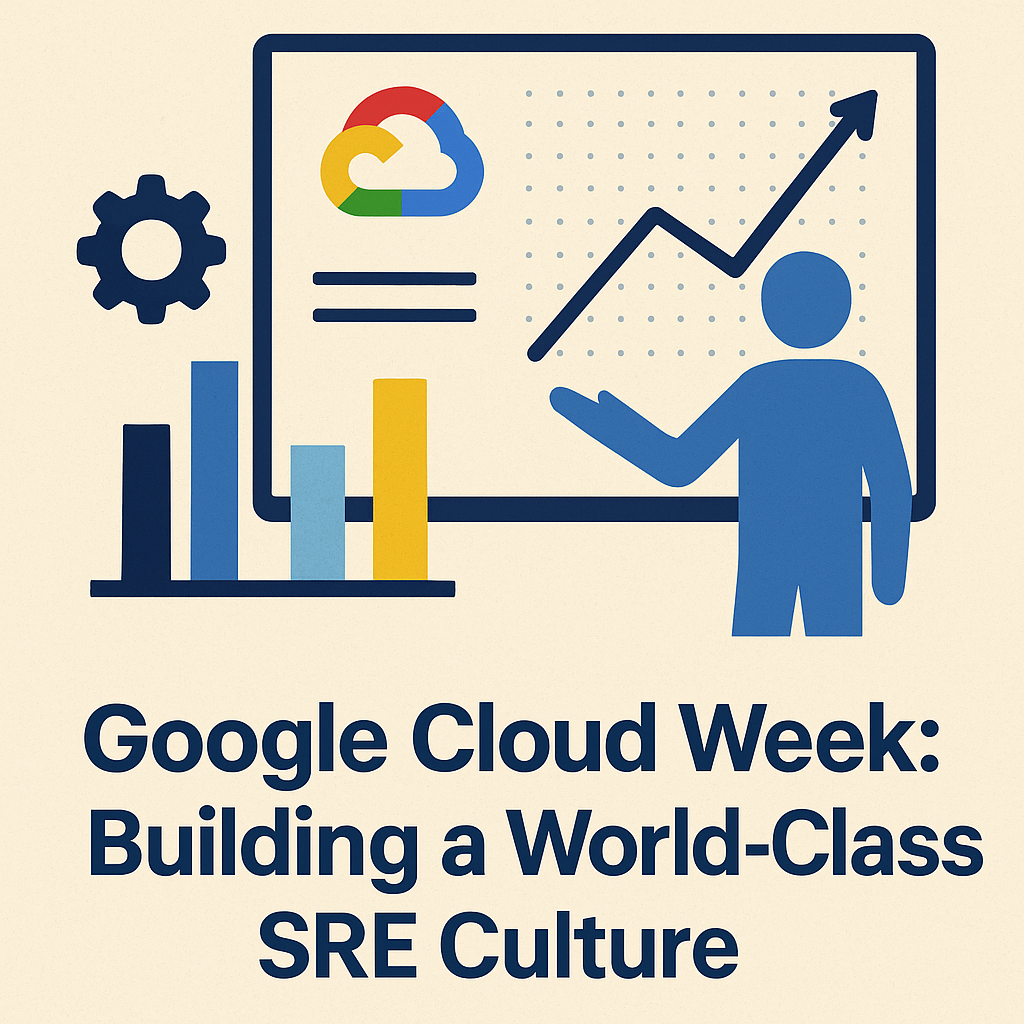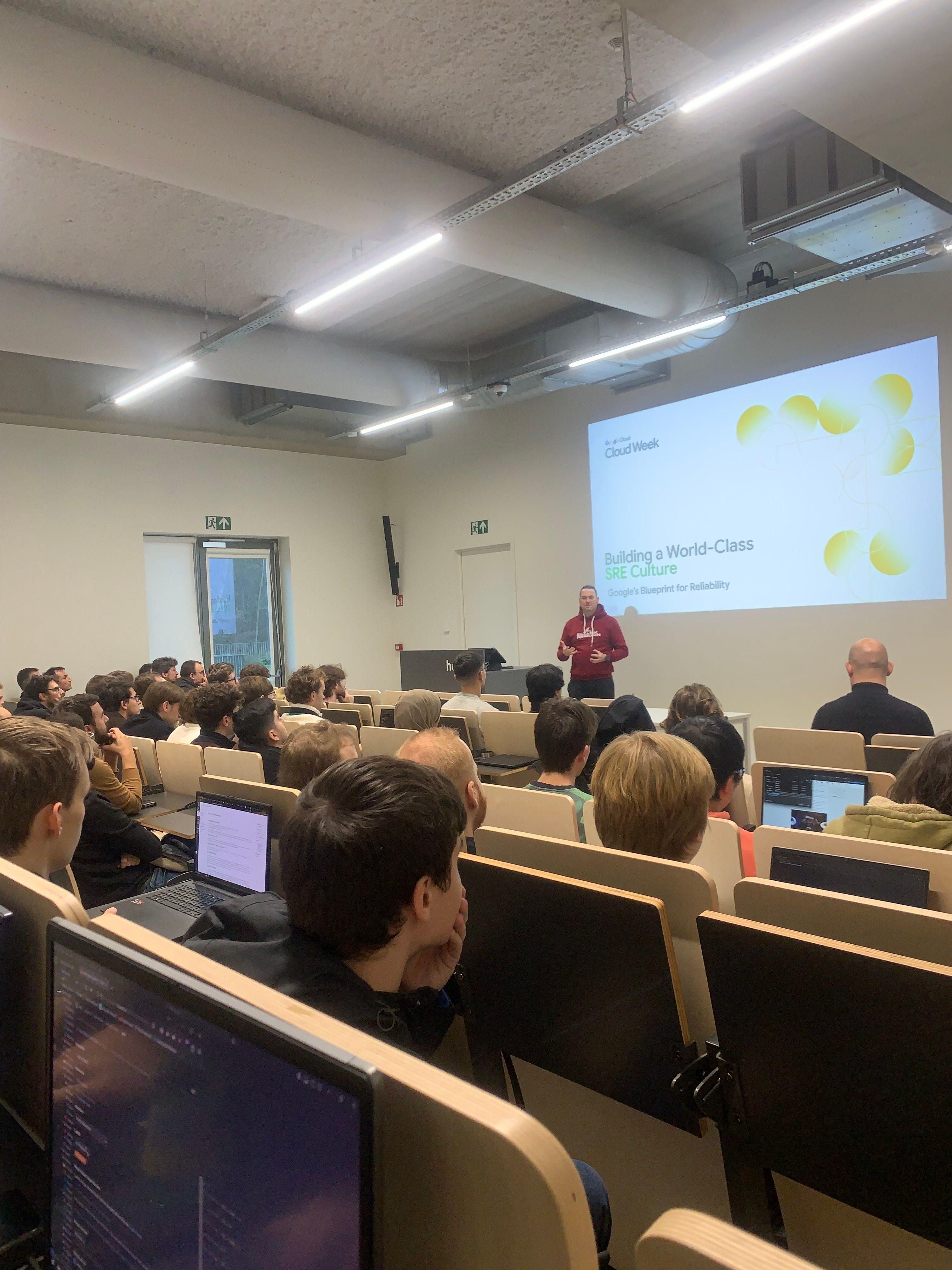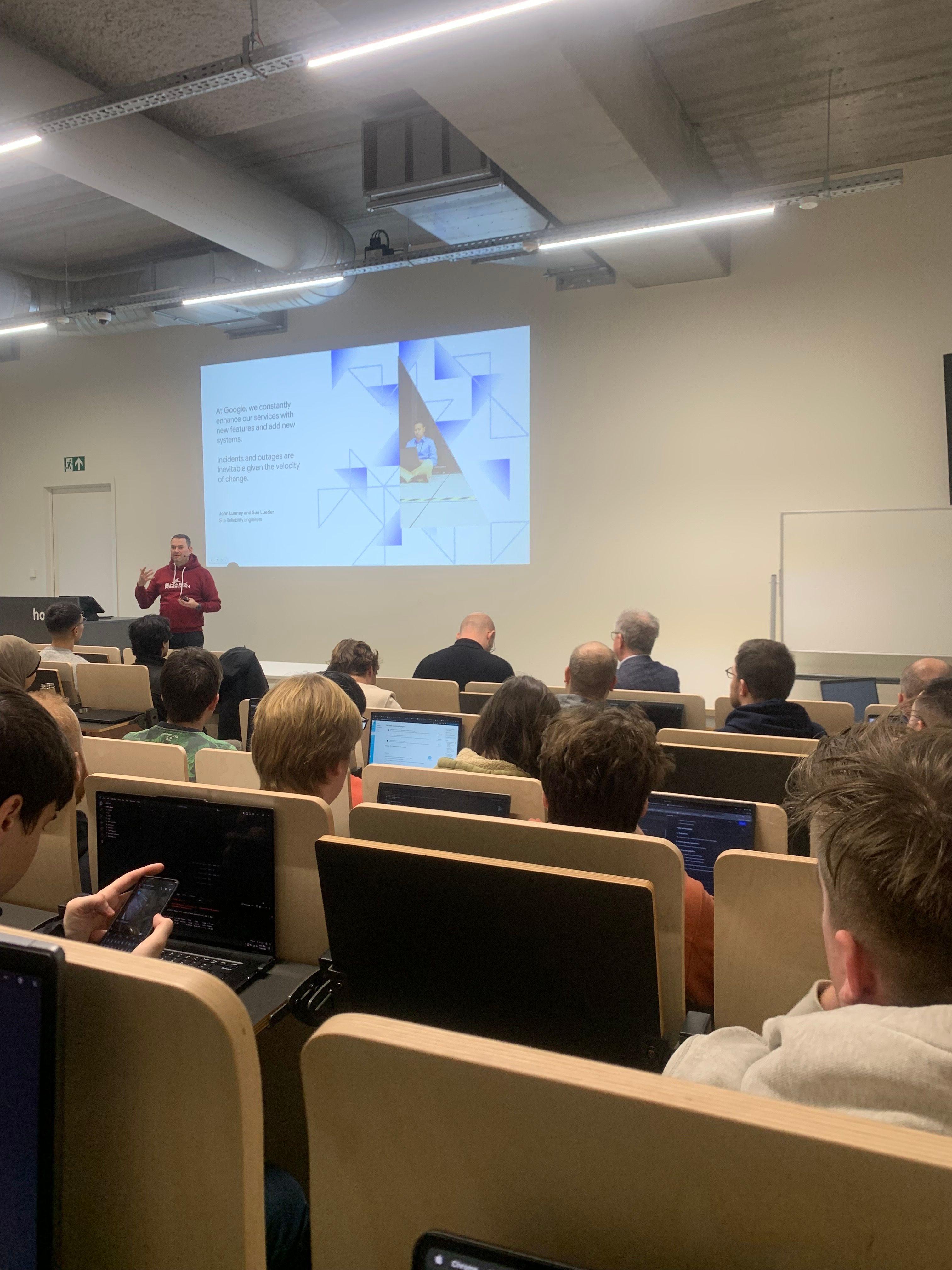Deep dive into Google cloud SRE

Event Overview
Recently, I had the opportunity to attend a lecture about Google Cloud Week, where I participated in a fascinating session called "Google's Blueprint for Reliability: Building a World-Class SRE Culture." The presentation provided deep insights into Site Reliability Engineering (SRE), a discipline that originated at Google and has since revolutionized how tech companies approach operations and reliability.
The session spanned several hours, covering the fundamental principles of SRE, key methodologies, and practical implementations. What impressed me most was how Google has transformed traditional operations work into a software engineering discipline, creating a more scalable and sustainable approach to maintaining complex systems.
Technical Content & Learnings
What is SRE?
The session began with Benjamin Treynor Sloss's famous definition: "SRE is what happens when you ask a software engineer to design an operations team." This perfectly encapsulates the philosophy of applying engineering principles to operations work.
I learned that SRE emerged as a solution to the scaling operations problem. As systems grow in complexity and size, traditional operations teams face challenges scaling linearly with infrastructure growth. SRE addresses this through:
- Automation and self-healing systems
- Standardized tooling
- Communities of practice
- Shared responsibility between developers and operations
Key SRE Principles
The presentation outlined several fundamental principles that guide SRE practice:
- Reliability as the Most Important Feature - Without reliability, other features don't matter
- User-Centric Reliability Measurement - Our monitoring doesn't decide our reliability; our users do
- Reliability Tiers - Well-engineered software can only get you to 99.9%, operations to 99.99%, and business processes to 99.999%
- Perfect Reliability Is Wrong - As Treynor Sloss put it, "100% is the wrong reliability target for basically everything"
One quote that particularly struck me was: "Incidents and outages are inevitable given the velocity of change." This acknowledgment of inevitable failure was refreshing to hear from a company of Google's stature.
SRE Vocabulary and Methodology
The presentation introduced essential SRE concepts:
- Critical User Journeys (CUJs) - Specific steps users take to accomplish goals
- Service Level Indicators (SLIs) - Metrics that measure service performance
- Service Level Objectives (SLOs) - Target values for SLIs
- Error Budgets - Quantified acceptable unreliability
I was particularly fascinated by the error budget concept - the idea that by defining an acceptable level of unreliability (e.g., 99.9% uptime means 43.2 minutes of downtime per month), teams gain a concrete way to balance reliability work against feature development.
Risk Analysis and Management
The session covered how Google approaches risk analysis by measuring:
- Time to detect (ETTD)
- Time to respond (ETTR)
- Percentage of service impact
- Time between failures (ETTF)
These metrics help quantify risks and prioritize mitigation efforts based on potential business impact.
Connection to Coursework
This SRE session directly connected to several aspects of our Cloud Infrastructure course. While we've covered high availability and distributed systems theoretically, the Google Cloud Week session provided practical, industry-focused implementations of these concepts.
The mathematical approach to reliability through SLOs and error budgets extended our theoretical understanding of service reliability. In our coursework, we've discussed monitoring and alerting, but the SRE framework provides a more comprehensive approach by connecting these technical practices to business objectives.
I can already see opportunities to apply these concepts to our current cloud deployment project by:
- Defining clear SLOs for our application components
- Implementing more thoughtful monitoring based on user journeys
- Using error budgets to make data-driven decisions about prioritizing reliability work versus feature development
Future Applications
The SRE principles I learned will be immediately applicable to both my academic projects and future career:
- For my final year project: I'll be implementing SLOs and error budgets to better manage reliability expectations and provide a framework for prioritizing work.
- For internship opportunities: Understanding SRE practices makes me a more attractive candidate for cloud and DevOps roles. During my conversation with industry professionals, several mentioned that SRE knowledge is increasingly valued even for entry-level positions.
- Long-term career growth: SRE sits at the intersection of development and operations, providing a career path that combines technical depth with business impact. The skills I learned will be valuable regardless of whether I pursue a pure development role or an operations-focused position.
Reflection
Would I recommend Google Cloud Week to fellow IT students? Absolutely. The quality of content, relevance to current industry practices, and networking opportunities made it exceptionally worthwhile. The session balanced theoretical concepts with practical implementation details, making it accessible even to those without extensive industry experience.
I found the SRE philosophy particularly compelling because it acknowledges the reality of software development - failures will happen, perfection is impossible, and engineering is about making intelligent tradeoffs. As someone preparing to enter the industry, this pragmatic approach to reliability feels much more sustainable than pursuing impossible perfection.
What aspects of SRE do you find most interesting? Have you had experience implementing these concepts in your projects? I'd love to hear your thoughts in the comments!
Event Gallery



Written by
Sayidali Ibrahim